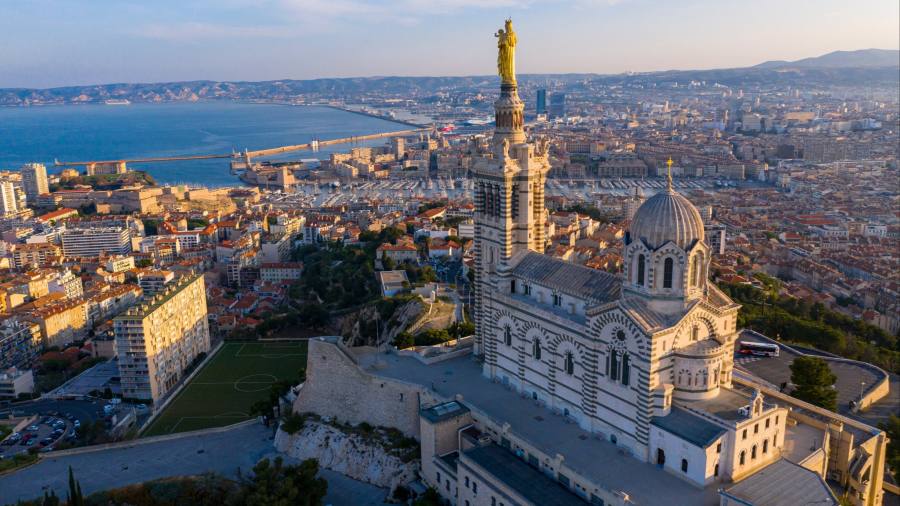
Once a week, Florian Tiennot, 31, who moved to Marseille in 2021 after nine years in Paris, makes the journey back to the capital for a day in the office for his job as a sound engineer.
It is an eight-hour round trip door to door, thanks to the TGV that connects the two cities. But it is worth the slog, he says. “Paris had become more and more expensive; here the living is so much cheaper and you have the sun, the sea and the chilled-out lifestyle. The surrounding countryside is stunning and I love to ski — in the winter I’m on the slopes in two hours,” he says.
Then there is the cost of housing. In January, Tiennot bought an 82 sq m home in the city for €337,000. “In Paris, where I was living on the Canal Saint-Martin [a fashionable district spanning the 10th and 11th arrondissements], I’d have paid double,” he says.
Combined with Marseille’s Mediterranean location and manageable size, savings like these have seen a sharp influx of those moving from Paris in recent years seeking homes to buy or rent.
“It has been growing in popularity among those from Paris for about a decade but since the start of the pandemic it has really accelerated,” says Marie-Christine Steffanetti of local agent Barnes Marseille.
Many from Paris choose Vauban — a neighbourhood now so thick with Parisians, says Tiennot, that he refused to consider it in his home search, preferring a more authentic Marseille experience.
Less than 2km from the sea, the area’s steep narrow streets, lined with a range of apartments and varying sized town houses with distinctive colourful facades, command excellent sea views. Besides the draw of the Catholic Basilique Notre-Dame de la Garde, the city’s most recognisable symbol known locally as “La Bonne Mère”, Vauban is well stocked with a range of independent shops, many specialising in local produce, as well as a range of restaurants and bars.
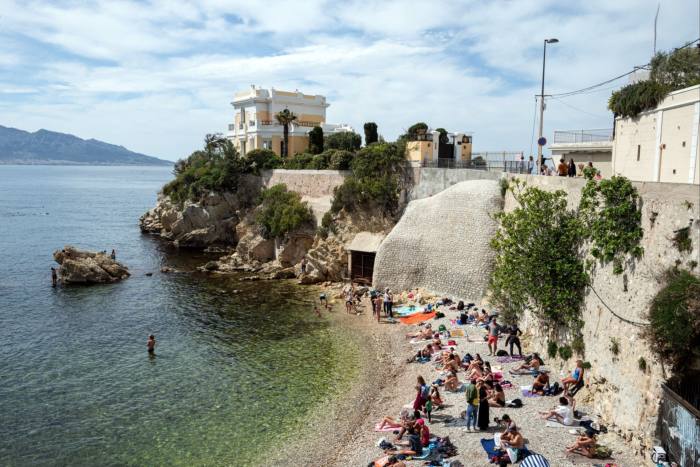
Océane Lunven, 27, who grew up in the city and has lived in Vauban since 2015, has seen it change considerably in recent years.
“Before the pandemic there were basically three bars you wanted to be in, and you were always hanging out with the same people,” she says. “Today, bars and restaurants are opening all the time. Sometimes I haven’t even heard about them and it’s someone [newly arrived] from Paris who is telling me there’s a new restaurant I should visit.”
Marseille’s growing popularity has resulted in rising prices. Average list prices increased 34 per cent between September 2019 and September 2023, according to Meilleurs Agents.
Rent controls mean that Lunven’s €680 per month rent for the two-bedroom flat, located near La Bonne Mère, has not changed since she moved in with her mother in 2015. But citywide, rents have increased by 12 per cent since 2019, and are up 5 per cent in the last year, according to Meilleurs Agents.
“If I had to move out there’s no way I could stay in the area,” she says.
The city’s growing appeal is in part due to a programme of urban regeneration — much of which dates from about 2013, when the city was named a European Capital of Culture — that has aimed to clean up France’s second most populous city, long associated with high crime rates and urban decay.
Euroméditerranée, a €7bn redevelopment begun in 1995 and located between the Old Port, the commercial harbour and the TGV station, has created 200,000 sq m of public space, 37,000 jobs and 18,000 new homes, according to its website.
Local highlights include the Villa Méditerranée, a public space and gallery complex that since last June has admitted visitors to the Cosquer Méditerranée, a new museum featuring a replica of a 30,000-year-old cave near Marseille famous for its prehistoric rock art.
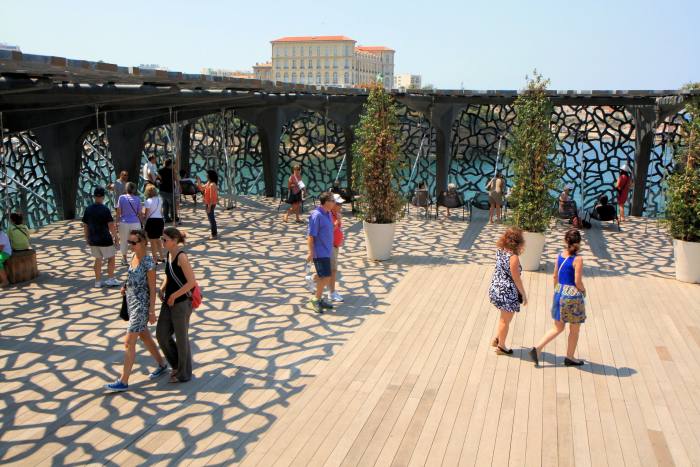
Next door is the Museum of Civilisations of Europe and the Mediterranean, or MuCEM. Opened in 2013, its cube-shaped main building is an imposing mass with an elegant concrete latticework facade and a striking pedestrian walkway connecting the museum to the adjacent Fort Saint-Jean.
Anastasia Cabrit, who lives in Castellane, a popular residential neighbourhood immediately to the east of Vauban, is a regular visitor to the museum and its surrounds. “There are great exhibitions there and I love the rooftop, there right by the sea. I can spend hours just walking around — and from my house I can get there on my bike in 20 minutes,” she says.
Cabrit moved from Paris with her housemate Anaïs in 2022; they rent their two-bedroom flat for €1,200 a month. It is larger and more centrally located than the home they left in Paris, which cost €1,600 a month. Currently, the average rental listing in Marseille is €16 per sq m per month, compared with €31 per sq m in Paris, according to Meilleurs Agents.
Despite cultural assets such as MuCEM, Marseille’s coastal location, including a long shoreline, several beaches and its easy access to the beauty of the surrounding countryside, lie at the heart of its appeal for most arriving from Paris.
“The beach is a 30-minute walk. Yesterday I went for a run and swam in the sea,” says Anaïs, 29, who declined to give her surname. She is currently looking to buy a one-bedroom flat in neighbouring Vauban, with a budget of €250,000. “I grew up by a lake with the mountains and nature; I couldn’t stand the long winter in Paris and wanted to live in a city surrounded by nature.”
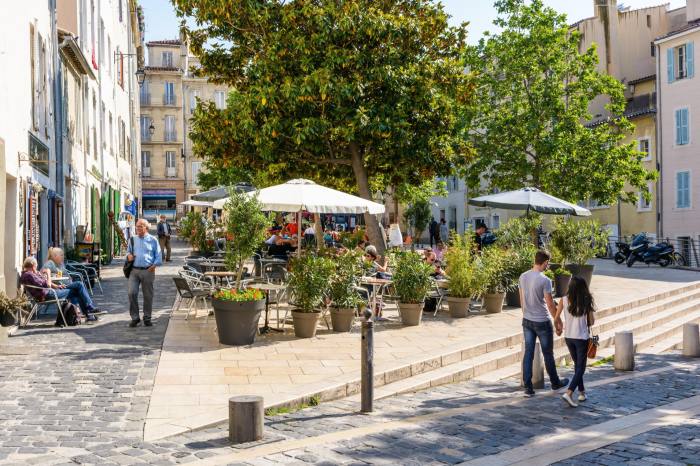
Marseille’s small size means many neighbourhoods are within easy reach of the seafront or one of the city’s beaches. These include the 8th arrondissement, which begins at the foot of the city’s famous Corniche du Président John Fitzgerald Kennedy, a 3km-long arterial route and promenade along the seafront. Thanks to the area’s large villas, sea views and parks, combined with its cultural attractions — including the 18th-century Château Borély, housing the city’s Museum of Decorative Arts, Earthenware and Fashion — it contains many of the city’s most expensive homes.
The area also contains the Le Corbusier-designed Cité Radieuse, a nine-storey concrete Modernist apartment block, its distinctive front a patchwork of red, yellow, green and blue angular walls. The development, a Unesco World Heritage site, is part of the architect’s experiment in collective housing and has a bookshop, publishing house and primary school on the roof. Sales of the 337 apartments, which feature 23 different designs, rarely make it to market, says Steffanetti — instead being traded by word of mouth between locals.
For Cabrit and Anaïs, Marseille’s lower living costs have helped them step away from a Paris lifestyle dominated by the office and partying. “In Paris all life turns around your work and you go out a lot; everything you do means spending money,” says Anaïs.
But crime remains a problem for the city. To address it, President Emmanuel Macron pledged to invest about €1.5bn on improvements including better transport, policing, schools and hospitals in 2021. But Marseille still has the highest rate of vandalism of France’s 10 largest cities, with 12 offences committed per 1,000 residents last year.
Before she moved to Vauban, Lunven lived behind the city’s opera house in the Old Port for five years. In that time she learnt of three shootings on or near her street and several people were killed in local violence, which typically erupted around nightclubs, she says.
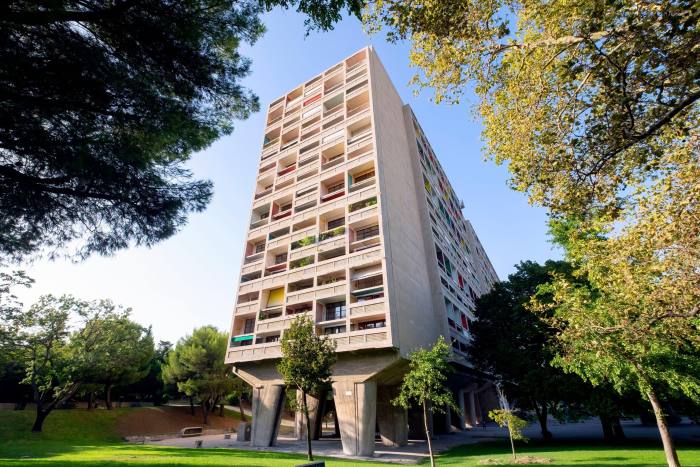
Today, she feels safer in the city but there are still several neighbourhoods she wouldn’t visit, even in the day. “And, alone on foot at night, almost everywhere is dangerous,” she says.
Marseille was a centre of France’s riots in June and July after the killing of Nahel Merzouk, a French 17-year-old of Moroccan and Algerian descent, by police in Paris.
“On the first night, I watched from the hill beneath [La Bonne Mère] with a friend; there were fires everywhere across the city,” says Lunven. But the riots have not made her feel any less safe in the city, she says. “It was an exceptional instance and related to that particular death. Now it’s over and almost forgotten.”
And the riots have done little to dent the appeal of the city to Parisians, she says. “Before when people said I came from Marseille, they say: ‘Isn’t it dangerous?’ Now, they respond: ‘Oh my God, it’s gorgeous, I wanted to live there.’”
At a glance . . .
-
The average list price for a Marseille apartment on September 1 was €3,755 per sq m, compared with €9,944 in Paris, according to French property website Meilleurs Agents.
-
The TGV connects Paris with Marseille in about 3hr 15min.
-
Direct flights link Marseille with Paris in 1hr 25min and London in 2hr.
On the market
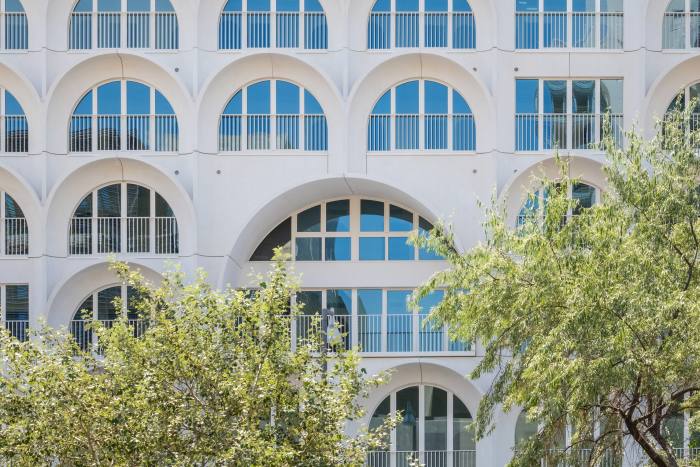
Apartment, Euroméditerranée, €420,000
A one-bedroom, 58 sq m apartment built this year, with a terrace overlooking the port. The property, which is located on the 15th floor, has views of the sea and the working harbour. For sale with Barnes Marseille.
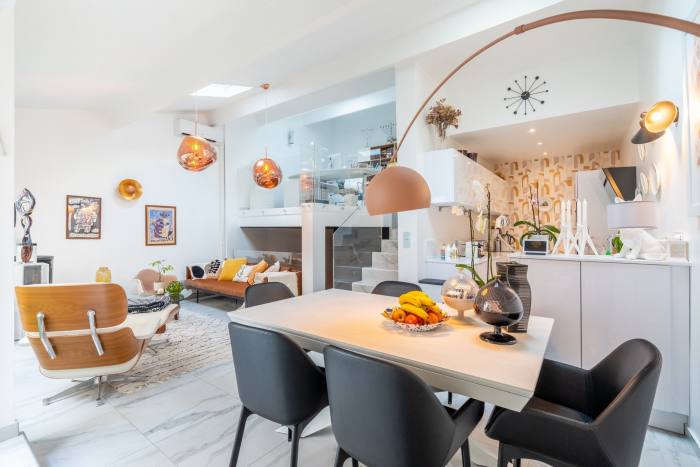
Apartment, Castellane, €890,000
A three-bedroom, 131 sq m apartment with a terrace, located between Place Castellane and Notre-Dame-du-Mont. The home, which was fully refurbished in 2021, includes a mezzanine office and air conditioning. For sale with Barnes Marseille.
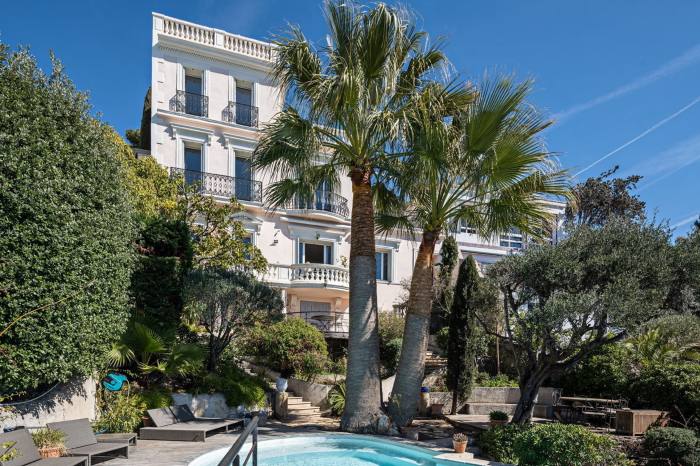
House, La Corniche, €2.7mn
A five-bedroom, three-bathroom home in a prime position on La Corniche Kennedy with a pool and great sea views. The property, which dates back to the 19th century, has a terrace and balconies overlooking the garden. Available through Knight Frank.
Find out about our latest stories first — follow @FTProperty on X or @ft_houseandhome on Instagram